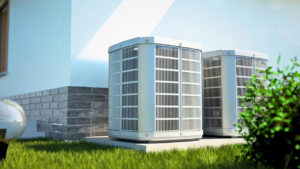Most of us are pinching pennies after the holidays. This means that home maintenance services that aren’t absolutely necessary often get pushed to the back burner. I’ve heard many folks (myself included!) wonder things like “Is annual maintenance really necessary for my furnace,” or “couldn’t I do that myself and save some money?”
These are great questions! Let’s demystify annual HVAC maintenance by going over: 1. Why an annual service might be important 2. Whether or not all HVAC maintenance is performed equally 3. What, exactly, your service tech (or, what a good one, anyway) should be accomplishing during their visit, and 4. Could annual maintenance be a DIY project?
Is annual maintenance important for your furnace or heating system?
The short answer is yes. But let’s not leave it at that.
Houses are like cars in many ways (except if you’re lucky, you don’t spend nearly as much time in your car as you do your home). So, why is it that most people agree regular car maintenance is critical, whereas it still seems up for debate that your home also needs scheduled care from a professional? Like a car, home heating systems are composed of many intricate parts that all have to work together to deliver healthy, warm, efficient, and cost-effective heat. And, like an inspection and oil change for your car, a regular inspection and maintenance for your furnace can undoubtedly extend the life of your heating system, and the overall health of your home.
Most people know what happens to a car without the routine recommended maintenance. But what happens to your home without an annual furnace maintenance?
A neglected furnace or heating system could result in:

- Utility bills going up. No one wants to spend more money on monthly heat bills than they need to. No one. A high heat bill is one major indicator that your furnace needs attention.
- Your furnace could need replacing sooner. ALL furnace manufacturers recommend a yearly service. Having to buy a new furnace could mean prematurely shelling out thousands of dollars to keep your family comfortable. If you can extend the life of your current system with under $150 per year, you probably should.
- A furnace that hasn’t been properly cleaned can overheat, become clogged, start a fire, release carbon monoxide into your home (cracked heat exchanger), or simply make your furnace shut off. I don’t know about you, but I’d prefer a yearly maintenance to breathing carbon monoxide, yikes!
- Illnesses and allergies can be (and often are) caused or exacerbated by faulty or dirty heating systems. This is the air your family breathes, after all.
Are all Annual Maintenance calls performed equally?
Will these items listed above be addressed when you schedule a service call? Unfortunately, the answer is maybe. The service you receive can vary drastically depending on who you call and what you pay. One company can give your furnace or boiler a clean bill of health; whereas another company could come in a week later and find that a multitude of things were not properly taken care of.
There seems to be no industry standard for what is included in an annual maintenance appointment. Many companies offer a “basic tune-up,” a “comprehensive maintenance,” or something by a different name or somewhere in between. Your best bet is to ask the technician what they will be doing exactly. He or she should be able to quickly give a complete list of items they’ll be cleaning or checking; it should look something like the list below.
What exactly needs to be done annually?
This checklist is the minimum of what should be performed at a comprehensive service appointment. A good HVAC company will also take note of the home performance implications that arise. Technicians who are trained to identify home performance issues will recognize things like duct leakage, house leakage, excessive dust in the home or ducts, rodent issues, and other problems that won’t necessarily be resolved by routine furnace maintenance. Finding and addressing these home performance gaps will lead to a much more efficient, healthy, and warm home.
Basic Annual Furnace Maintenance:
- Test temperature rise through furnace
- Test all furnace safety controls for proper operation
- Test thermostat for proper operation
- Test and adjust furnace gas pressure if applicable
- Check furnace electrical connections and wiring condition
- Test furnace sequence of operation
- Clean furnace blower compartment
- Check and clean furnace burner compartment
- Check furnace blower wheel
- Check and clean furnace burners if applicable
- Inspect venting for rust and/or corrosion
- Check and clean flame sensor and pilot assembly if applicable
- Lubricate all moving parts if applicable
- Replace furnace filter
- For all fossil-fuel burning equipment: Carbon Monoxide Detection test performed in living area
Could the homeowner do all of this herself?
The homeowner could in fact do all of these things, but only if they know how to perform all or most of the items on the list above. I for one, don’t know anyone who isn’t an HVAC professional who can adequately execute all of these checks and cleanings. A heating professional should be able to complete and explain to you everything on the list above; which is what makes them worth the 100 to 150 bucks it costs to do it right!
Hopefully this post has helped to take some of the complexity and mystery out of the annual furnace maintenance. Keeping your annual appointment is all about preventative measures. Following recommended maintenance will likely keep you warm and healthy longer, and keep unexpected furnace shut-downs at bay!
Continue Reading
Posted in Allergies, Annual Maintenance, Clean Home, Comfort, DIY, Dust, Energy Efficiency, Energy Savings, Furnaces, Health, Home Performance, Indoor Air Quality | Comments Off on Annual Furnace Service (Part I of our Annual Maintenance Series!)







